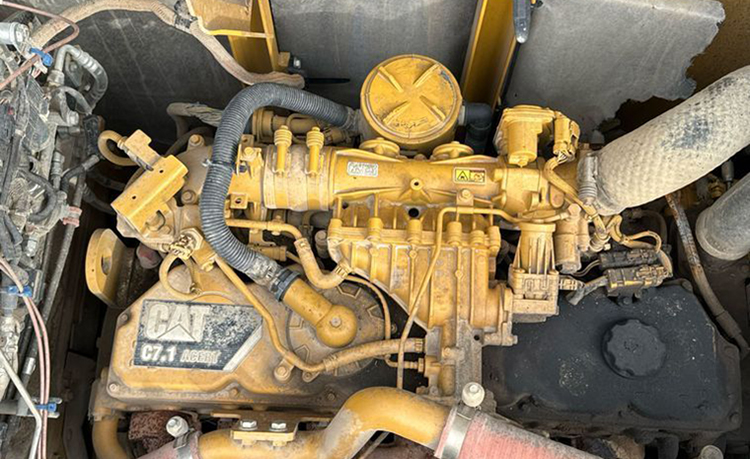
About a month ago, we fixed an “unfixable” Paccar MX-13 here in ten minutes. This truck was a Kenworth that had been off the road for about two years. The truck initially started running poorly, and the owners did what many clueless owners do – they deleted it. Thousands of dollars later, the truck still ran poorly, and they ultimately gave it up for auction. The truck was sold and taken to a Paccar dealer to be fixed, but the dealer wouldn’t work on it unless it was put back to stock. But even after that, they were still unsuccessful at fixing it, so it returned to the auction. That is how it ended up at Pittsburgh Power. The new owners were again told to delete the truck to fix the issues. We don’t typically work on Paccar engines, but I am always up for a challenge. But in this case, I was hesitant. This truck had been through so much already, I thought it might be best to avoid it altogether.
However, after weeks of bugging me, I relented and told them to bring the truck in on a Wednesday afternoon. The owner wanted help so badly that he offered to get his laptop with officially licensed Paccar engine software and data link so I could look at this truck. We didn’t have this software then, so it was a pretty telling gesture. We put the truck on the dyno, connected the software, and made initial pulls. We found the engine would only make 110-hp! I can understand why no one wanted this truck. I started by doing what I always do – checking the easy stuff. Are there codes? No. Do the sensors read correctly with a key on and the engine off? Yeah. What does the data tell me while we are running the engine?
In this case, the data shouted at me what was wrong. The fueling state was in a turbocharger derate. That is why it is derated, but I wondered what was causing the derate. I sifted through the sensors individually, seeing if the readings made sense. They all did until I got to the exhaust manifold pressure sensor. Under full load, it only read 9 psi. I knew this was impossible with a VGT-equipped engine. So, it had to be either the sensor itself, the wiring, or the ECM.
My first test is my go-to for situations like this: unplug the sensor. This puts the ECM in a state where it uses a default value instead of using the reading it is seeing. Most of the time, this causes the ECM to use different tables for combustion decisions. After unplugging the sensor, we re-ran the truck. I immediately could tell it was different. I could also see the owner’s reaction – he knew it was fixed. The truck made 425-hp to the wheels, just as it was supposed to.
A quick inspection revealed that the pipe from the exhaust manifold to the EGR was still blocked from the original delete. In this pipe was the tube that connected the exhaust manifold pressure sensor to the manifold. Since the pipe was blocked, no pressure could reach the sensor, and the ECM was sent into a derate. I sent the owner home to take the plug out and told him everything would run fine after he removed it. The unfixable truck was finally fixed after two years. I’m not sure what would have initially caused it to run poorly, but I’m sure the $37,000 in parts they installed (wasted) probably fixed it.
You have heard me talk about “squeezing nickels” many times. Here is a quick little story about someone who tried to pinch pennies and it came back to bite them. Friday late afternoon I had a distress call from a gentleman with a 2013 CAT excavator powered by a 7.1 liter emissions CAT engine. Friday afternoon the engine goes into a derate because of emission problems, and one of the owners needed the excavator for a weekend job. There are two brothers that own the machine – the brother that was operating the machine is a user of the Max Mileage Catalyst in all of his equipment, but the other brother is very thrifty, and will not spend the money for the catalyst.
The local Caterpillar dealer charges $2,000 for them to travel to a location of a machine and repair the emissions problems if it can be performed in the field. The brother who loves the catalyst, who needed the excavator, put the Max Mileage in the fuel tank, topped the tank off with fuel, started the engine, and in about three minutes could feel the engine was running better. He continued to work the machine Friday night and 11 hours on Saturday. Moral of this story: the nickel you squeeze today, may come back to haunt you later!
Thanks to Leroy Pershing for helping me out on this month’s article. I have said it before, and I will say it again – squeezing nickels will not get you a great running truck that is efficient, dependable, and fun to drive. If you have questions or comments, feel free to stop by our shop in Saxonburg, PA or call us at (724) 360-4080. Our website (www.pittsburghpower.com) is open 24/7 and is a wealth of information about who we are and what we do. Check it out today!

